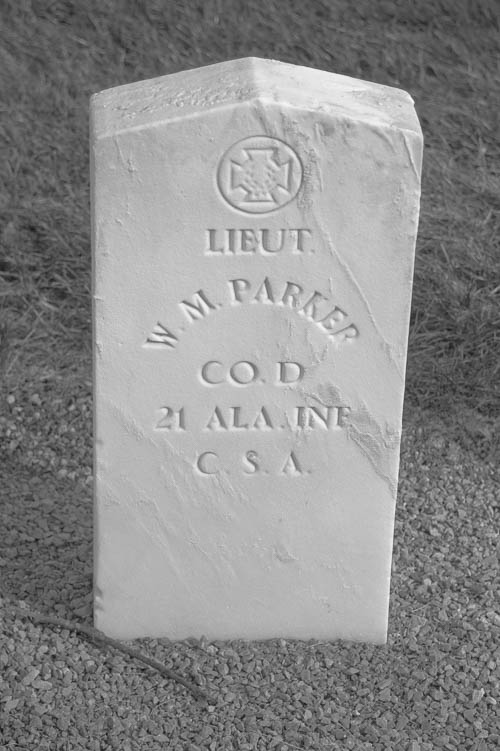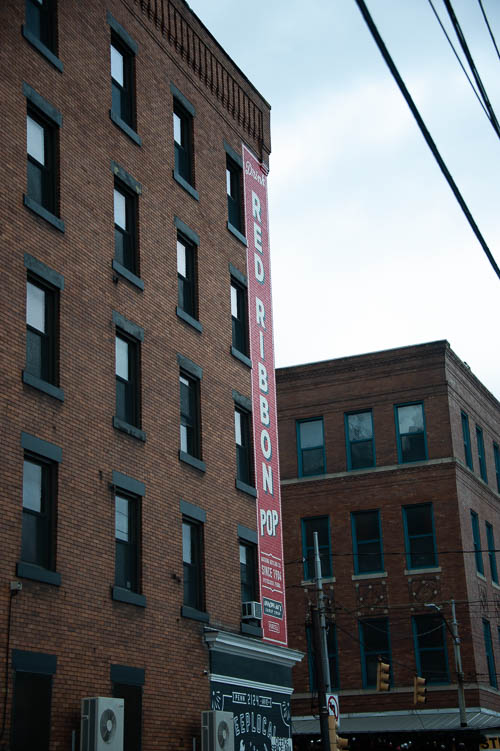
Happy Birthday, William Shakespeare!
Places and Their People, History, and Lore

Happy Birthday, William Shakespeare!

I went out during this morning’s snow flurries to photograph our tulip bed. We have a frost warning for tonight.
Updated: Here are the photos that I took at yesterday’s mural dedication.
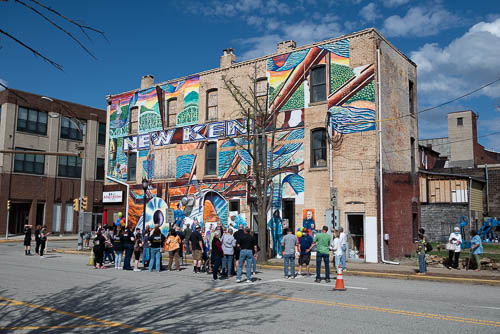
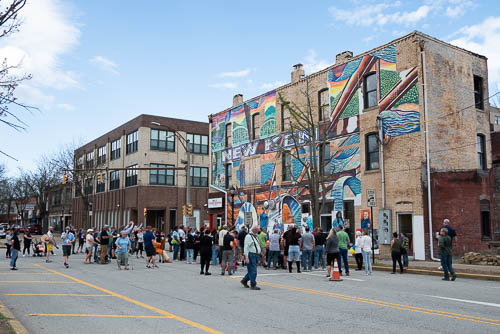
Here is my blog post from last week:
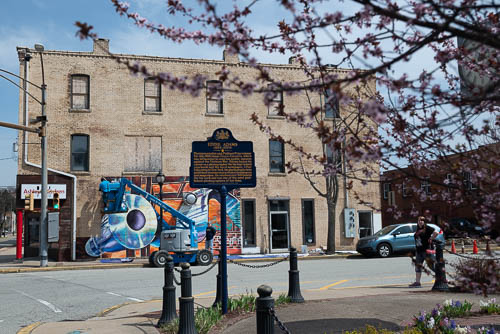
“Make no little plans; they have no magic to stir men`s blood and probably themselves will not be realized. Make big plans; aim high in hope and work, remembering that a noble, logical diagram once recorded will never die, but long after we are gone will be a living thing, asserting itself with ever- growing insistency. Remember that our sons and grandsons are going to do things that would stagger us. Let your watchword be order and your beacon beauty.“
This quote from the architect Daniel Burnham produces a lot of Google results. However, I learned about this from Adam Selzer’s Mysterious Chicago livestreams. Selzer taught me that Burnham spoke these words at an urban planning conference in London in October 1910.
So, today when my husband came back from his lunchtime walk around Parnassus and downtown New Kensington, he told me something.
He said, “Hey, they’re putting up that mural downtown right now.”
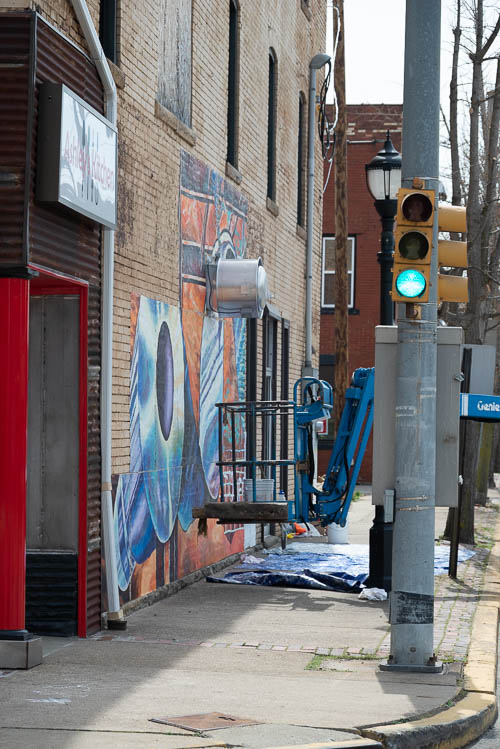
We’ve known for awhile now that community leaders planned for a mural in downtown New Kensington. In fact, here is the story from the local media that told Jonathan and I almost everything that we knew about the mural.
You will be able to see this mural as you finish crossing the bridge that locals call “The New Kensington Bridge” (technically the C.L. Schmitt Bridge) over the Allegheny River, into downtown New Kensington.
It’s being added to the side of a building right next to the scene of a devastating multi-building fire that happened a few years ago. In fact, my husband worked at the scene of this fire as a volunteer firefighter. In my opinion, the fire seemed to be pretty heartbreaking for so many people. So, I’m happy to see something pretty created here.
I’m so happy that I headed downtown and took photos of the mural-in-progress.
Every single one of you who comes here to look at my photos is fantastic and I love you all. For those of you who dream bigger than I do, “God Bless You!”
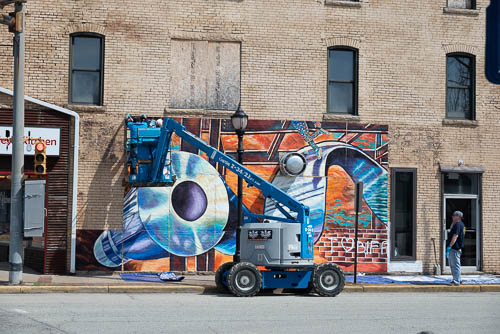
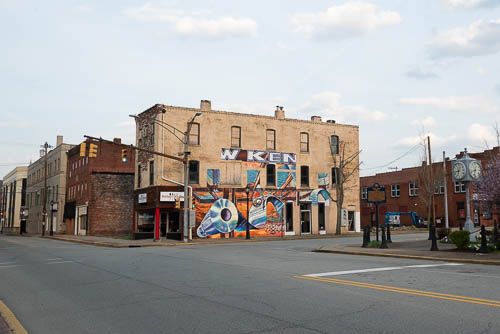
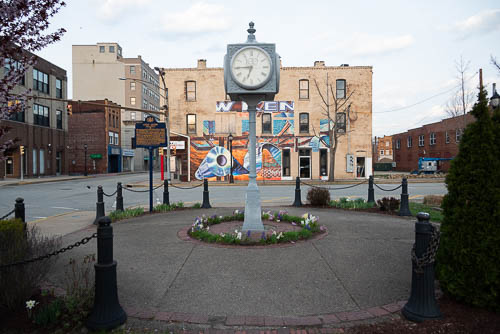

I live in a house built in the 1890’s. I spend a lot of time thinking about the people who lived here before me. What did these people know about their own world? What tragedies did they see and explore?
My husband, Jonathan, purchased our house a year before I met him. I had never actually been to New Kensington until I met Jonathan. Jonathan moved to New Kensington when he was in the sixth grade because his grandparents already lived here. That’s why he later decided to buy a house in the Parnassus neighborhood here.
Parnassus borders the Allegheny River. This is important for part of my story.
The Alter family originally owned my and Jonathan’s Victorian home here in Parnassus. This same family is now buried in a churchyard down the street from this same house. I speculate that some of them still reside in the home with me and Jonathan.
Jonathan researched the Alter family. He told me about the Alters when he first showed this house to me.
Let’s start with the family patriarch, Frank Alter Sr.
Alter was born in 1871 in Pittsburgh.
Alter’s father fought in the Civil War. Alter’s father then maintained a long career with the Allegheny Valley Railroad Company.
Frank Alter Sr.’s own professional life began at age 17 with his own job at the Allegheny Valley Railroad Company as a telegraph operator. Four years later, he was appointed station agent at New Kensington.
Now, shortly after Alter assumed his first job with the railroad, the Johnstown Flood killed over 2,000 people, in May 1889. A privately-owned dam on a private lake upstream from Johnstown failed. The wall of water demolished the communities that sat between the lake and Johnstown, and then the water hit Johnstown and destroyed it as well.
The flood occurred upstream from New Kensington as well. It occurred on a tributary to a tributary of the Allegheny River. According to the book “The Johnstown Flood” by David McCullough, flood debris washed downstream from Johnstown, eventually into the Allegheny River, on to Pittsburgh and points beyond. McCullough wrote that somebody plucked a live baby out of the Allegheny River in Verona, which is downstream from New Kensington. McCullough wrote that onlookers stood on the banks of the Allegheny, watching the results of the flood flow past them. Some even plucked souvenirs from the river.
Did Alter first learn about the flood during his duties in the telegraph office? Did he join the crowds which lined the Allegheny River’s banks?
Now, I grew up an hour’s drive south of Johnstown, and my sixth grade class studied the Johnstown Flood. We read excerpts from McCullough’s book.
McCullough acknowledged at the beginning of his book that “most” of the dialogue in Chapters 3 and 4 of his book had been taken directly from a transcription of testimony taken by the Pennsylvania Railroad in the summer of 1889. The railroad’s tracks lined the tributaries hit hardest by the flood. The railroad’s telegraph system documented events leading to the moments before the flood wiped out the tracks and the telegraph lines.
McCullough’s book noted that in the moments before the Johnstown flood happened, a railroad telegraph agent communicated the impending dam failure to Hettie Ogle, who ran the “switchboard and Western Union office” in Johnstown.
McCullough identified Ogle as a Civil War widow who had worked for Western Union for 28 years. The book noted that she was with her daughter Minnie at the time. She passed the message on to her Pittsburgh office. McCullough noted that the two perished in the flood and their bodies were not recovered.
When I was in the sixth grade, I was told that Hettie Ogle faithfully stayed at her telegraph post and relayed river gauge data until at last she wrote:
THIS IS MY LAST MESSAGE
The story haunted me.
Based on how this story was presented to our class, I was under the impression that Hettie Ogle was trapped in the telegraph office with just her daughter. I assumed that Hettie Ogle and her daughter were “rare” because they were women who also worked outside the home at the telegraph office.
Now, here is something that McCullough’s book did NOT tell me, and that I learned instead from the website for the Johnstown Area Heritage Association (JAHA): Ogle was actually trapped in that office with her daughter Minnie, “four other young ladies” who were named by the JAHA website, and also two named men. When I read the website, I understood this to mean that all eight of the named women and men who were trapped in this telegraph office worked in the telegraph industry. They all perished.
I didn’t realize until I first read the JAHA website that Hettie Ogle actually managed an office full of staff. I also didn’t realize that many of the employees in Johnstown’s Western Union office in May 1889 were women.
I have since figured out that if Hettie Ogle worked for Western Union for 28 years until she died in 1889, that means that she started her Western Union career in 1861. The Civil War also started in 1861. As I noted above, she was identified as a war widow. Did she have to take a job with Western Union in order to support her children when her husband went off to war? Did she do it out of a sense of duty for the war effort, and then she stayed with it because she enjoyed the work? I speculate now about the circumstances that led her to her “duty” operating the telegraph.
Now, I speculate about many things. I speculate that since Frank Alter Sr. got his start in the railroad industry as a telegraph operator, the tragedies of the Johnstown Flood would have impacted him personally. Perhaps he even knew some of the telegraph and / or railroad employees who died that day in 1889.
The telegraph industry of the 1800’s fascinates me because I think a great deal about my own dependence on technology.
I first realized how much I – or at least my sense of well-being – depended on being able to keep contact with others and with information on September 11, 2001. I lived in the family home in Somerset County. I worked in downtown Johnstown. Flight 93 crashed between these two points while I was at work that day.
After I and my co-workers watched the twin towers burn live on television, our employer’s co-owner told us to “go back to work.”
However, a few minutes later, this same co-owner’s daughter rushed through the office to announce that a plane had crashed in Somerset County. (This plane, we later learned, was Flight 93.) We learned that we – along with every other worker in downtown Johnstown at that time – were being evacuated because a federal court building existed in downtown Johnstown. I couldn’t reach my family who lived with me in Somerset County on the phone. I attempted, and I had no connection. I then learned that we were being asked to stay off of our phones in order to leave the lines available for emergency crews. I also learned that a portion of Route 219 – the main highway that I used to drive to my family home in Somerset County – was closed due to the morning’s events. I was being forced to leave downtown Johnstown due to the mandatory evacuation, but I had no information about whether I would be able to get back to my home in Somerset County.
I made it home to Somerset County without incident. However, this was the first time that I remember feeling confused because all of my decision making instincts depended on information that I couldn’t access.
More recently, I thought that I was so slick because I specifically curated my Twitter feed to follow the feeds for Pittsburgh’s transit agency, the National Weather Service, and several other emergency management agencies. I worked in downtown Pittsburgh by then, and I commuted home each weeknight – usually by bus – to New Kensington. I reasoned that with my specially curated Twitter feed, I would have available all of the information that I needed to make informed decisions about my commute home if I were to be in Pittsburgh and a natural disaster – or another terrorist attack – happened.
However, on the day that Pittsburgh and its surrounding region had a major flash flooding event, Twitter broke. I had based my entire theoretical emergency plan on having up-to-the date tweets from all of the sources that I listed above. I had access to no updated information from any of these sources.
Once again, I felt completely betrayed by technology at the moment when I felt its need the most.
Now, for another story that I have about being dependent on technology:
I read part of “The Personal Memoirs of Julia Dent Grant (Mrs. Ulysses S. Grant).” Julia Dent Grant (JDG) was born in 1826. In 1844, Samuel Morse sent the United State’s first telegram over a wire from Washington to Baltimore. (Congress partially funded this.) In 1845, JDG’s father, Frederick Dent, travelled from their home in St. Louis to Washington for business. He sent a telegram to Baltimore. JDG wrote that her father received an answer within an hour and that “it savored of magic.” The event was such a big deal that Frederick Dent brought the telegraph repeater tape back home to St. Louis to show the family.
Now I’m going to skip ahead in the memoirs to 1851. At this point in the memoirs, JDG is married to Ulysses S. Grant and they have an infant son. Julia visited family in St. Louis while her husband was stationed at Sackets Harbor, near Watertown, in New York State. JDG planned to telegraph her husband from St. Louis, and then travel with her nurse to Detroit. Then, she would release her nurse and meet her husband in Detroit. Finally, she would travel with her husband from Detroit to Sackets Harbor. I am under the impression that the trip from St. Louis to Detroit to Watertown was all by train.
Well, JDG telegraphed her husband in St. Louis per the plan. She left St. Louis and travelled with her nurse to Detroit. She dismissed her nurse and waited for her husband in Detroit. Her husband never showed up. JDG eventually travelled alone with her baby to Buffalo, hoping to meet her husband there. Her husband wasn’t in Buffalo, so she continued on the train to Watertown. From Watertown, she had to hire a carriage (the Uber of the 1800’s), and travel to Madison Barracks, the military installation at Sackets Harbor. The entrance to Madison Barracks was closed, so she had to yell to get a sentry’s attention.
The telegram that JDG sent to her husband from St. Louis arrived at Sackets Harbor IN THE NEXT DAY’S MAIL.
That’s right – at some point in the journey, the telegram failed to perform its basic function as a telegram. The telegram became snail mail.
After JDG’s husband was promoted during the Civil War, he travelled with his very own personal telegraph operator. (In fact, the Grants learned about President Lincoln’s assassination through a personal telegram received by the personal telegraph operator.)
By the end of the Civl War, the Grants had come a long way since their days of “snail-mail telegrams.”
Other people have actually written entire books about how telegraphs and semaphores affected the Civl War.
Here’s one of my favorite parts of JDG’s memoirs: At one point during the war, JDG asked her father, Frederick Dent, why the country didn’t “make a new Constitution since this is such an enigma – one to suit the times, you know. It is so different now. We have steamers, railroads, telegraphs, etc.“
I just find this so fascinating because JDG witnessed her country’s tremendous changes that resulted from Technology. She wondered how all of these Technology changes affected her country.
I, personally, spend a lot of time wondering about how Communication Technology in general – the telegraph, the internet, whatever – changed our national culture and also changed each of us as people.
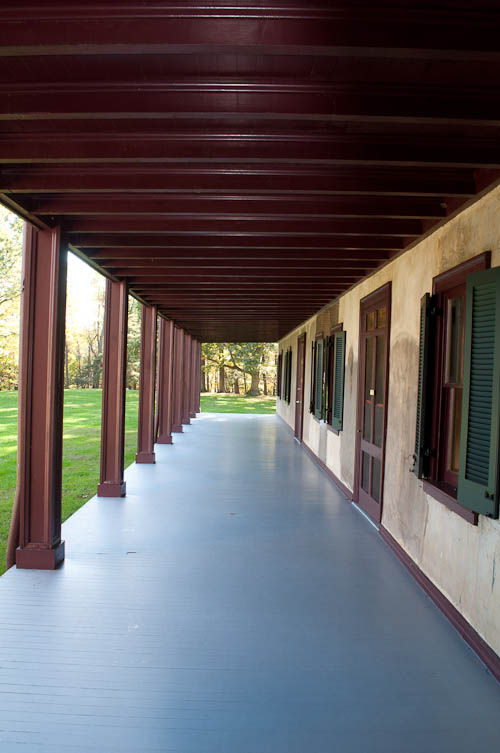
I found an article titled “Who Was Alexander Hamilton’s Real Nemesis: Aaron Burr or Albert Gallatin and the Jeffersonians?” by Christopher N. Malagisi, dated August 30, 2018, on the Townhall website. This article referenced the book “Jefferson’s Treasure: How Albert Gallatin Saved the New Nation from Debt,” by Gregory May.
The idolized and fabled Alexander Hamilton served as our first Secretary of the Treasury. Hamilton rival Albert Gallatin served as our fourth Secretary of the Treasury.
Thomas Jefferson was the President of the United States who appointed Gallatin as Secretary of the Treasury. Aaron Burr was elected as Jefferson’s Vice President in the election of 1800. So, these guys all knew each other.
Now, my brain totally shut off about one paragraph into reading about the subject matter. Just as it did when I had to learn about the Federalists and the Whigs and the Jeffersonians in high school. So, I don’t have my own fully-formed opinion about whether Albert Gallatin was Hamilton’s real nemesis. I do think that if Lin-Manuel Miranda had rewritten the Hamilton musical so that it was just a bunch of guys arguing about whether Hamilton or Gallatin made a better Secretary of the Treasury, it would not still be on Broadway.
Albert Gallatin owned an estate in Southeastern Pennsylvania. Gallatin’s first wife, Sophia, is buried on the estate. The National Park Service now runs the estate as Friendship Hill National Historic Site. There is no admission fee to visit.
Part of me wishes that Miranda had at least written Gallatin into his “Hamilton” musical – even in a tiny role – so that Point Marion could use it to lure tourists there.
If you want to sight-see while also social distancing, you may want to check out Friendship Hill. Here is my prior blog post about Friendship Hill.
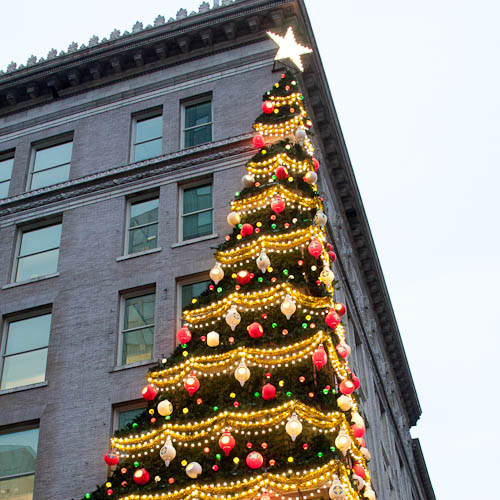
When I think of Christmas-time, I think about my times shopping at Fashion Bug.
Fashion Bug started as a women’s clothing store in Eastern Pennsylvania decades before I was born. I think that all or almost all of the stores were located in Pennsylvania.
By the time that I was in junior high school, we had our own Fashion Bug in a strip mall in Somerset. I lived in Berlin, which was about ten miles from Somerset and 30 miles from Johnstown. So, we did most of our shopping in Somerset. I was so excited when I saw regular advertisements for Fashion Bug in “Teen Magazine,” and then I realized that we had one of our very own in Somerset. I believe that this was the only time that I ever saw an advertisement in one of my magazines for a store actually located in Somerset.
I remember that the Fashion Bug ads included coupons for $10 off of a $30 purchase. The coupon was one big reason why I was permitted to purchase my eighth-grade winter coat from Fashion Bug in Somerset instead of from Kmart in Somerset. (Kmart and Fashion Bug shared the same strip mall in Somerset. Come to think of it, every single Fashion Bug at which I ever shopped was located in the same shopping center as a Kmart.)
After I outgrew “Teen Magzine,” my favorite thing about Fashion Bug was the adrenaline rush that I got from thinking that I saved a TON of money from shopping there during a “sale.” Everything that I ever purchased from that place included a price tag that indicated a significant price reduction. The store printed this same price reduction on the LONG receipts that I received with every bag of clothing. Every single item on my receipt would say something to the effect of “Full Price: $59.99. New Price: $14.99.” Then, the end of the receipt would say: “Total: $34.99. You Saved: $2,999.”
I once purchased a pair of sandals from Fashion Bug’s clearance rack for a college function for $6.99. Unfortunately, the shoes were so uncomfortable that I only wore them one or two times.
By the time that I graduated from college, I purchased most of my office “work clothes” from Fashion Bug. Twinsets, turtleneck sweaters, etc.
One time, I watched a “Saturday Night Live” skit in which a contestant on a fake dating game show identified herself as a Fashion Bug employee. The punchline was that the contestant didn’t have an opportunity to find love because she was too busy with her entry-level retail career at Fashion Bug. (I’m not laughing at retail employees. I worked in fast food next to the Pennsylvania Turnpike. I worked a low-paying retail job at a non-Fashion Bug clothing store. I worked in the shoe department at Walmart. I am sure that the “Saturday Night Live” show writers did similar.)
What does this have to do with the winter holidays? Well, I bought SEVERAL of my winter coats from Fashion Bug. I Christmas shopped there. I bought a New Year’s Eve dress for my friend’s 21st birthday party there.
I miss Fashion Bug.
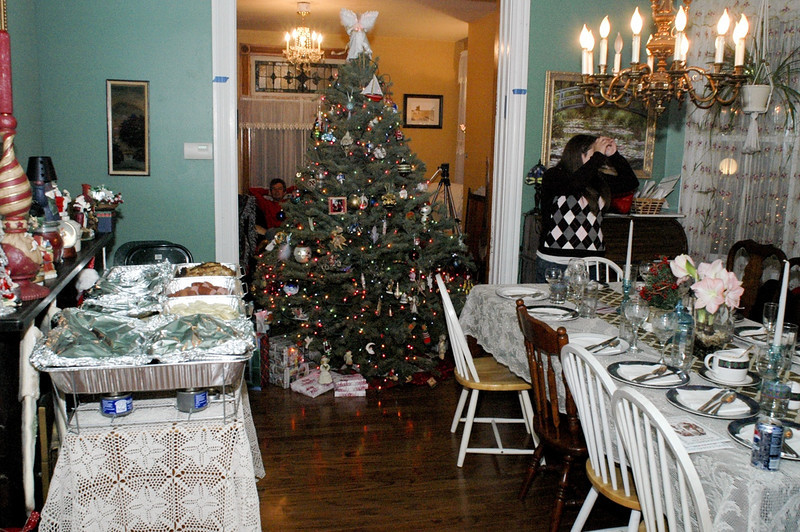
I am so excited to present Jonathan and Jennifer Woytek’s Christmas 2020 Virtual House Tour. Jonathan finished this tonight especially for all of you, since we aren’t having visitors at our house this holiday season.
Our house was built in the 1890’s. I intend, at some later date, to blog a little bit about this house and the Victorian-era traditions that it might have seen.

Woodpecker. New Kensington, Westmoreland County, Pennsylvania. November 6, 2020. (Photo: Jenny Gaffron Woytek)
Here is a woodpecker that I saw in my neighborhood this afternoon.
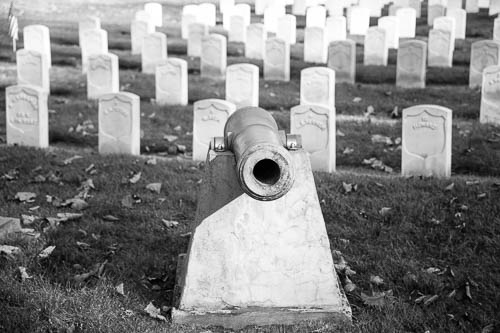
In 2018, I took a guided tour of Allegheny Cemetery. This cemetery is on the National Register of Historic places.
Allegheny Cemetery includes a National Cemetery Administration’s soldiers’ lot. The Allegheny Cemetery Soldiers’ Lot is located in Section 33 of Allegheny Cemetery. The majority of the 303 soldiers buried here were Civil War soldiers. Most of the burials were of Union soldiers; however, the lot also contains several Confederate soldiers.
I returned to the Soldiers’ Lot in 2019 in order to take some photos.
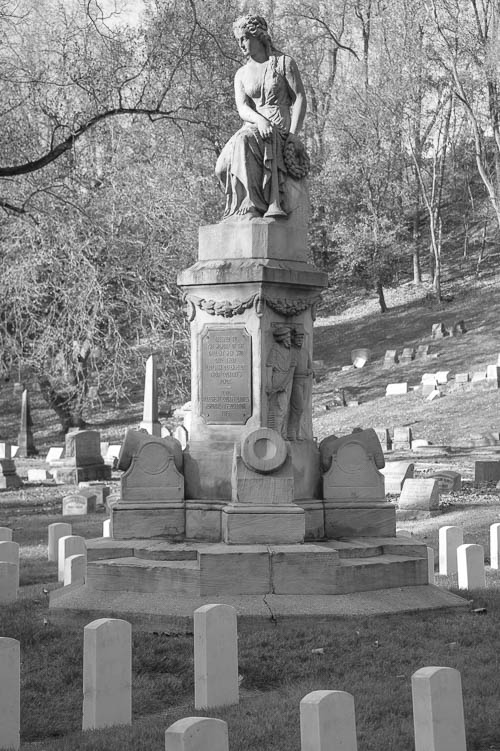
I didn’t have any prior knowledge of this following soldier, but I Googled his name when I returned home.
From the Veterans Affairs / website for Allegheny Cemetery Soldiers’ Lot: Corporal John M. Kendig (Civil War). He received the Medal of Honor while serving in the U.S. Army, Company A, 63rd Pennsylvania Infantry, for actions at Spotsylvania, Virginia, May 12, 1864. His citation was awarded under the name of Kindig. He died in 1869 and is buried in Section 33, Lot 66, Site 32.
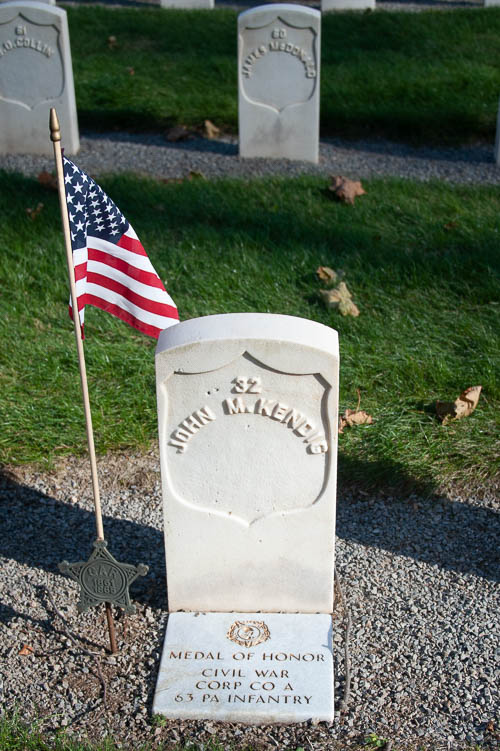
Here’s a grave for an unknown Union (United States) Civil War soldier:
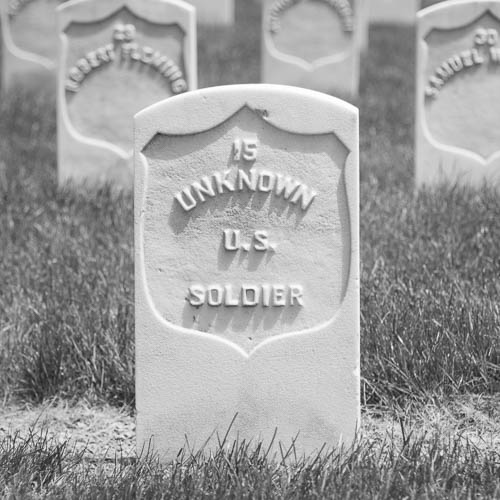
Finally, here is a Confederate grave that I saw at the Soldiers’ Lot. Note how the headstone differs from that of a Union soldier.
